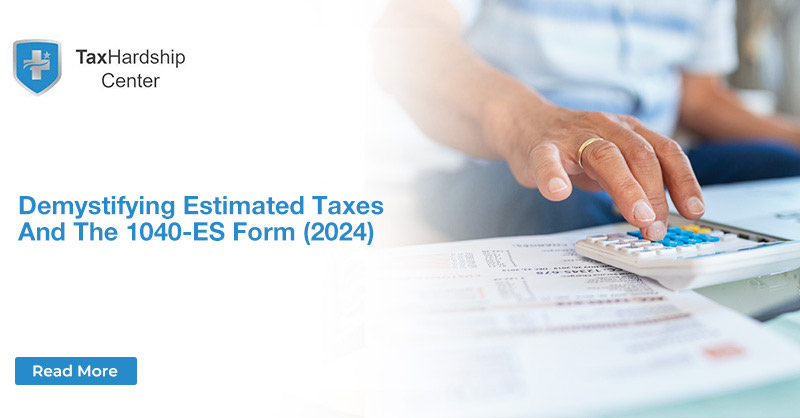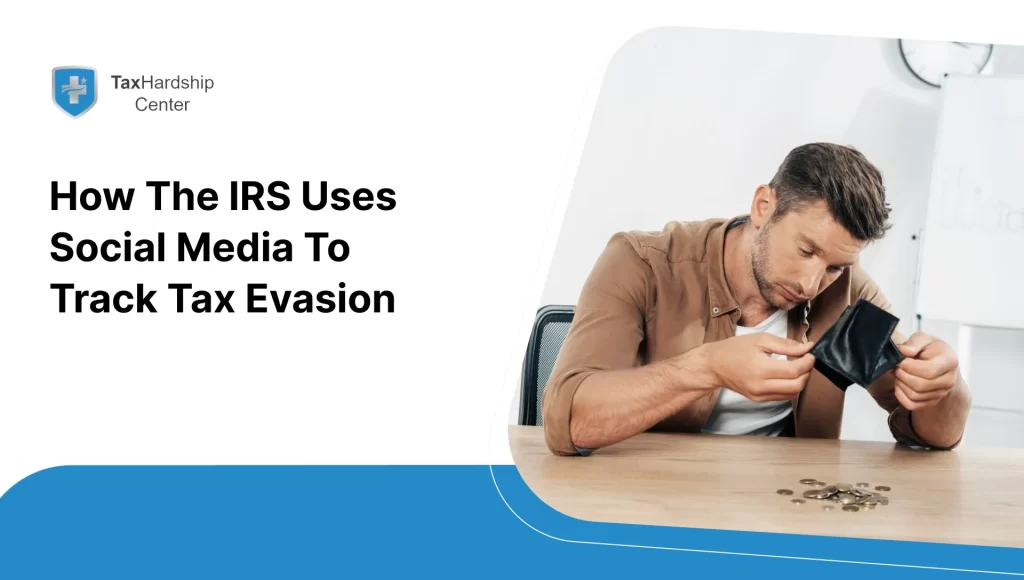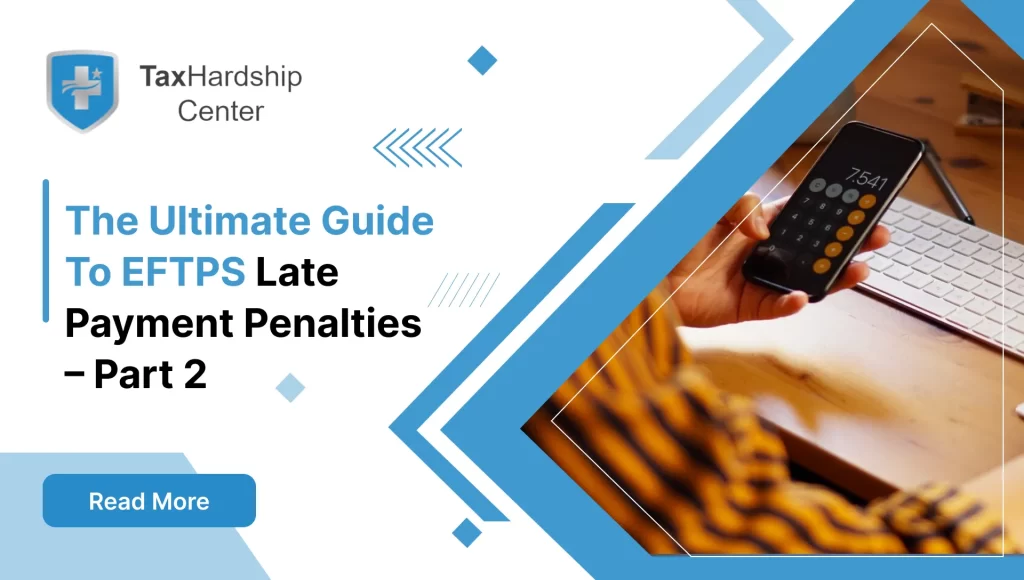Taxes can be complex, but understanding estimated taxes doesn’t have to be. If you’re an American aged 40 or over and receive income not subject to withholding (like self-employment income or investment earnings), this section will guide you through the 1040-ES form.
We’ll break down estimated taxes and who needs to file them and simplify the process of using the 1040-ES form. By the end, you’ll feel more equipped to navigate estimated taxes and avoid potential tax surprises in 2024.
The Role of Form 1040-ES in Estimated Taxes
Form 1040-ES is crucial for taxpayers with income not subject to withholding taxes. It is the primary tool through which individuals can calculate and pay their quarterly estimated taxes, ensuring compliance with tax laws and avoiding potential underpayment penalties. Using the form’s guidelines and worksheet, taxpayers can accurately determine their estimated tax liability for the year.
Significant Changes to the 1040-ES in 2024
In 2024, the IRS introduced several updates to Form 1040-ES to reflect tax regulation adjustments and standard deductions alterations. Taxpayers should be aware of these changes as they can impact the estimated tax calculations. Additionally, any modifications to tax rates or brackets and revisions to credits and deductions are accounted for in the latest version of the form, simplifying the process for individuals to accurately determine their estimated taxable income. Taxpayers must use the most current form to ensure they align with the updated tax structures and avoid any potential inaccuracies in their tax payments.
Introducing Tax Hardship Center: Your Trusted Partner for 1040-ES Forms!
Are estimated taxes causing you stress? At Tax Hardship Center, we specialize in navigating the complexities of Form 1040-ES, ensuring seamless compliance and peace of mind. Our hassle-free assistance, backed by a 14-day money-back guarantee, offers personalized solutions tailored to your needs. With nationwide coverage and free consultations, let us guide you through every step of the 1040-ES process.
Say goodbye to tax hardships – choose Tax Hardship Center today!
Determining Who Should File Estimated Taxes
Identifying if You Are Required to Make Estimated Tax Payments
Determining the need to make estimated tax payments is essential for managing one’s responsibilities. Generally, if you expect to owe at least $1,000 in taxes for the year after subtracting withholdings and credits, and if your withholding and credits are less than the smaller of 90% of the tax to be shown on your current year’s tax return, or 100% of the tax shown on your prior year’s tax return, then you are required to make estimated tax payments.
In particular, self-employed individuals, investors with considerable gains, and those with significant income not subject to withholding, such as rental or prize income, should pay special attention to these criteria. It is vital to reassess your tax situation periodically throughout the year, such as after significant transactions, to determine if estimated payments are necessary.
Specific Scenarios Where Estimated Taxes Are Necessary
Estimated tax payments are commonly required when income is not subject to regular withholding. This includes individuals who:
- Receive substantial income from self-employment activities, encompassing freelance work, consulting, or small business operations.
- Earn significant interest, dividends, capital gains, or rents, where such incomes are not subject to withholding.
- Obtain alimony payments, which may be taxable depending on the divorce decree or agreement date.
- Win prizes or awards, encountering a one-time or occasional financial gain outside typical withholding systems.
Moreover, those involved in direct sales, multiple jobs with inadequate withholding, or sharing economy activities, such as ridesharing or short-term rentals, may also be obliged to make estimated payments. The key is that if the tax withheld from various sources is insufficient to cover the tax liability for the year, these individuals must calculate and remit their taxes quarterly through Form 1040-ES.
Mastering the Calculation of Estimated Taxes
A Step-by-Step Guide to Figuring Your Estimated Tax
To accurately figure out your estimated tax, follow these steps:
- Estimate Total Income: Begin with estimating your entire income for the year. This should include all streams, such as earnings from employment, self-employment, dividends, interest, rents, and other sources.
- Calculate Adjusted Gross Income (AGI): Adjust your total income to compute your AGI by deducting any eligible adjustments, such as contributions to retirement accounts, student loan interest, or educator expenses.
- Subtract Deductions and Exemptions: Then, from your AGI, subtract any standard or itemized deductions that apply to your tax profile, as well as any exemptions if relevant.
- Determine Taxable Income: What remains is your taxable income—use this to find your estimated tax liability by referring to the current year’s tax rates and brackets.
- Factor in Tax Credits and Withholdings: Consider any anticipated tax credits (e.g., education credits, child tax credit) and any tax already paid through withholdings from wages or other payments.
- Calculate Quarterly Payments: Divide the total estimated tax liability by four to obtain your quarterly payments, adjusting if there is an expected change in income or deductions in subsequent quarters.
How Business Structures Influence Estimated Tax Calculations
The type of business structure an individual operates under can significantly impact the estimated tax calculations:
- Sole Proprietors and Single-Member LLCs: Profits and losses are reported on the individual’s personal income tax return using Schedule C. They must pay income and self-employment taxes on profits, necessitating estimated tax payments.
- Partnerships: Partners pay taxes on their distributive share of the income on their returns and may need to make estimated tax payments accordingly.
- S Corporations: Shareholders receive a Schedule K-1 indicating their portion of the corporation’s income, which they must report on their tax returns. If taxes aren’t withheld sufficiently, they’ll need estimated payments.
- C Corporations: These entities are taxed separately from their owners, but shareholders who receive dividends may owe estimated taxes if no withholding exists on the dividend income.
- Multi-Member LLCs: They can choose to be taxed as partnerships or corporations, and consequently, the process for estimated taxes will follow the rules applicable to the chosen tax structure.
When business income comprises a large portion of an individual’s taxable income, comprehending the influence of business structure is fundamental to accurate estimated tax calculations.
Critical Deadlines for Estimated Tax Payments
When and How Often You Need to Pay Estimated Taxes
Estimated tax payments are due four times per year. Each payment covers a specific period, and it’s essential to meet these deadlines to avoid penalties:
- First Payment: For income earned Jan 1 – March 31, the due date is April 15.
- Second Payment: For income earned April 1 – May 31, the due date is June 15.
- Third Payment: For income earned June 1 – August 31, the due date is September 15.
- Fourth Payment: For income earned September 1 – December 31, the due date is January 15 of the following year.
The deadline is the next business day if a due date falls on a weekend or holiday. Taxpayers must adhere to this schedule, making payments through mail, online methods, over the phone, or via the IRS2Go app.
For those with uneven income throughout the year, there’s an option to use the “annualized income installment method,” which might result in different payment amounts and due dates.
Understanding the Consequences of Missing Estimated Tax Deadlines
When paying taxes, deadlines are crucial, especially for those who must make estimated tax payments throughout the year. Failing to meet these deadlines can have repercussions beyond a simple oversight. The consequences of missing estimated tax payment deadlines are not to be taken lightly, as they can lead to substantial monetary penalties imposed by the IRS.
The penalties for late estimated tax payments or underpayment are determined by a few factors: the amount of unpaid tax, the period for which it is overdue, and the current interest rate determined by the IRS, which can change quarterly. It is also important to note that penalties can accrue on federal and state levels if you also have state tax obligations.
The IRS typically calculates penalties using a percentage of the unpaid tax for each day it remains unpaid after the deadline. This means the longer the delay, the more you’ll owe. Additionally, if you underpay your taxes significantly, you may be penalized even if you’ve paid by the deadline, making it crucial to calculate payments as accurately as possible.
To avoid the consequences, proactive planning is essential. Keep track of all the deadlines (usually April 15, June 15, September 15, and January 15 of the following year), and use reminders to ensure every deadline passes unnoticed. Moreover, always aim to make accurate payments that correlate with your actual income and tax bracket for the year.
Streamlining the Process of Making Estimated Tax Payments
For many taxpayers, calculating and making estimated tax payments can seem overwhelming. However, a few straightforward strategies can make the process much more manageable.
First, gain a clear understanding of your income and expenses. This involves meticulous record-keeping and organizing all your financial documentation, such as invoices, receipts, and any other records of income and deductible expenses. Doing so establishes a solid foundation for accurately estimating your income and, subsequently, your tax liability.
Another critical element in simplifying estimated tax payments is to adopt a regular schedule for reviewing your finances. You can adjust your estimated costs based on income or expense changes by checking your financial situation monthly or quarterly. This proactive, ongoing review reduces the likelihood of significant discrepancies between what you’ve paid and what you owe at the end of the year.
Embracing Online Payment Options for Your 1040-ES Taxes
Paying taxes has always been challenging, thanks to the various online payment platforms now available. The IRS recognizes several methods for making these payments digitally, providing you with convenience and flexibility to manage your tax obligations.
One such method is the Electronic Federal Tax Payment System (EFTPS), a free service offered by the U.S. Department of the Treasury. Once enrolled, you can schedule payments up to 365 days in advance, ensuring you never miss a payment.
Another option is to use IRS Direct Pay, which allows direct payments from a checking or savings account. This service is exceptionally user-friendly and offers instant confirmation for records.
You also have the choice to pay with a credit or debit card through a payment processor. While this option does entail a fee, it can be advantageous for those who benefit from credit card rewards or need more flexibility in payment timing.
Using IRS Direct Pay for Reliable and Secure Transactions
IRS Direct Pay stands out among all online payment options for its convenience, security, and cost-effectiveness. With Direct Pay, you can pay on the IRS website without additional fees. The interface guides you through the process, ensuring payment is as straightforward as possible.
When you submit a payment via Direct Pay, you receive a confirmation number for your transaction. This immediate confirmation provides peace of mind and a reliable record for your tax files. Moreover, security is a top priority with Direct Pay, as it uses advanced encryption technology to keep your bank account details and personal information safe.
How To File Form 1040-ES?
Navigating the world of taxes can be challenging, but with a step-by-step approach, you can confidently manage your estimated tax payments using Form 1040-ES. Let’s expand on the critical steps to filing Form 1040-ES, ensuring your costs are well-informed and timely each quarter.
Step 1: Gather your financial records
You must first organize your financial records to prepare for your estimated tax payments. This includes all income statements, such as 1099 forms, W-2 forms if you have employment income, interest statements from banks, and records of any income not reported on these forms, like cash or foreign income. Additionally, gather receipts for deductible expenses if you itemize deductions. Expenses may include business expenses, health care costs, and charitable contributions. Lastly, collect records of taxes already paid during the year, like withholding from paychecks or refundable credits.
Step 2: Determine your estimated income and taxes
Calculate the total income you anticipate earning over the year with your financial records. Be thorough—include all taxable income from various sources like wages, dividends, interest, business income, and capital gains. With your estimated income in mind, calculate the taxes that will be due. This calculation should encompass federal income tax, self-employment tax for those running their own business, and any other taxes that may apply to your situation. Consider the tax bracket you’ll likely fall into for an accurate estimate and any deductions or credits you expect to claim.
Step 3: Fill out the 2024 Self-Employment Tax and Deduction Worksheet
Self-employed individuals will need to pay particular attention to this step. The 2024 Self-Employment Tax and Deduction Worksheet is essential for determining how much you’ll need to pay in self-employment tax, which covers Social Security and Medicare taxes. The worksheet also helps identify eligible deductions that directly affect self-employment tax, such as the deductible portion of your self-employment tax or contributions to a SEP-IRA.
Step 4: Fill out the 2024 Estimated Tax Worksheet
Form 1040-ES has a comprehensive worksheet designed to guide you through estimating your tax liability for the year. It includes lines for adjusting your estimated income by your expected deductions and credits, ultimately leading to an estimate of the total tax you will owe. This worksheet is invaluable in helping you project your tax burden accurately.
Step 5: Record your estimated tax payments
Maintaining records of your estimated tax payments is critical. Document the date and amount of each payment. This meticulous record-keeping will assist you when it comes time to file your annual tax return, as you’ll need to report these payments. It will also be helpful if you need to reference your payments during the year for any subsequent adjustments.
Step 6: Fill out the payment voucher
If you’re making payments by mail, Form 1040-ES includes four payment vouchers for use with each of your quarterly payments. Fill out the voucher for the corresponding quarter with your name, address, Social Security number, and payment amount. Be precise with this information to ensure your payments are correctly applied to your tax account.
Step 7: Mail your payment and Payment Voucher
Once the payment voucher is filled out, attach a check or money order for the amount you’re paying to the voucher. Write your Social Security number and Form 1040-ES in the memo line of your check. Then, mail the voucher and your payment to the IRS at the address listed in the Form 1040-ES instructions that pertain to your geographical location. Remember to consider mail delivery times to ensure your payment arrives by the due date.
Navigating Estimated Tax Penalties and Developing Avoidance Tactics
Regarding estimated taxes, the IRS has clear guidelines and expectations. If you’re a taxpayer who falls under the obligation of paying estimated taxes, being well-versed in these guidelines is essential to avoid any unnecessary penalties.
The IRS penalizes taxpayers who need to pay more tax throughout the year. This can happen if you don’t make estimated tax payments when required or if these payments are late or less than the required amount. The penalty for underpayment of estimated taxes is essentially an interest charge on the amount that was underpaid for the period it was unpaid.
However, the IRS does provide some leeway to taxpayers. To avoid these penalties, you’re expected to pay at least 90% of the tax owed for the current year or 100% of the tax reported on the return for the previous year, whichever amount is smaller. This safe harbor rule gives you a clear target to hit with your payments and can protect you from penalties if your income for the current year unexpectedly increases.
Form 1040 vs Form 1040-ES
To achieve tax compliance, it’s essential to understand the distinction between Form 1040 and Form 1040-ES. Form 1040 is known as the U.S. Individual Income Tax Return. It is the standard form that taxpayers use annually to file their income tax returns, where they report all their earnings, claim deductions, and credits, and calculate the tax owed or the refund due.
On the other hand, Form 1040-ES, the Estimated Tax for Individuals, is used to pay taxes on income that isn’t subject to withholding. This can include earnings from self-employment, interest, dividends, alimony, rent, gains from the sale of assets, prizes, and awards. Taxpayers use Form 1040-ES to pay installments of their estimated tax annually.
Conclusion
In summary, managing your Form 1040-ES payments shouldn’t be taken lightly, as it can save you from unnecessary penalties and stress. With the outlined steps and tips, the estimated tax payment process can be more manageable, allowing you to focus on your business or investments rather than fretting over tax payments. Stay informed and prepared; your dealings with the IRS should remain in good standing.
Why Tax Hardship Center?
1. Hassle-Free Assistance:
Say goodbye to sleepless nights and endless tax-related stress. At the Tax Hardship Center, we believe in simplifying the complex. Our team of experts is dedicated to guiding you through every step of the process, ensuring that your tax concerns are met with precision and care.
2. 14-Day Money Back Guarantee:
We’re so confident in our ability to ease your tax worries that we offer a 14-day money-back guarantee. If, for any reason, you’re not satisfied with our service, we’ll gladly refund your investment. Your peace of mind is our top priority!
3. Free Consultation:
Are you curious about how we can transform your tax experience? Book a free consultation now! Our team will assess your situation, answer your questions, and provide free insights tailored to your needs.
4. Nationwide Coverage:
No matter which corner of the United States you call home, the Tax Hardship Center covers you. We proudly serve all 50 states, bringing our expertise to your doorstep. Wherever you are, our commitment to excellence follows.
FAQs for Navigate Estimated Taxes with the 1040-ES Form (2024 Edition)
1. What is the purpose of Form 1040-ES?
Form 1040-ES is crucial for taxpayers with income not subject to withholding taxes. It helps individuals calculate and pay their quarterly estimated taxes, ensuring compliance with tax laws and avoiding potential underpayment penalties.
2. What are the significant changes to the 1040-ES in 2024?
The IRS introduced updates to Form 1040-ES in 2024 to reflect tax regulation adjustments and standard deduction alterations. Taxpayers should be aware of these changes, which can impact estimated tax calculations.
3. Who should file estimated taxes using Form 1040-ES?
Individuals who expect to owe at least $1,000 in taxes for the year after subtracting withholdings and credits, and if their withholding and credits are less than the smaller of 90% of the tax to be shown on their current year’s tax return or 100% of the tax shown on their prior year’s tax return, are required to file estimated taxes.
4. What are some specific scenarios where estimated taxes are necessary?
Estimated tax payments are commonly required for individuals who receive substantial income from self-employment, significant interest, dividends, capital gains, rents, alimony payments, prizes or awards, and those involved in direct sales, multiple jobs with inadequate withholding, or sharing economy activities.
5. How do business structures influence estimated tax calculations?
The type of business structure an individual operates under can significantly impact estimated tax calculations. Different business structures, such as sole proprietorships, partnerships, S corporations, C corporations, and multi-member LLCs, have varying requirements for estimated tax payments.
6. What are the critical deadlines for estimated tax payments?
Estimated tax payments are due four times yearly, with deadlines falling on April 15, June 15, September 15, and January 15 of the following year. Taxpayers must adhere to these deadlines to avoid penalties.
7. What are the consequences of missing estimated tax deadlines?
Failing to meet estimated tax payment deadlines can result in substantial monetary penalties imposed by the IRS, calculated based on the amount of unpaid tax, the period for which it is overdue, and the current interest rate determined by the IRS.
8. How can taxpayers streamline the process of making estimated tax payments?
Taxpayers can simplify the process of making estimated tax payments by clearly understanding their income and expenses, adopting a regular schedule for reviewing finances and embracing online payment options offered by the IRS.








